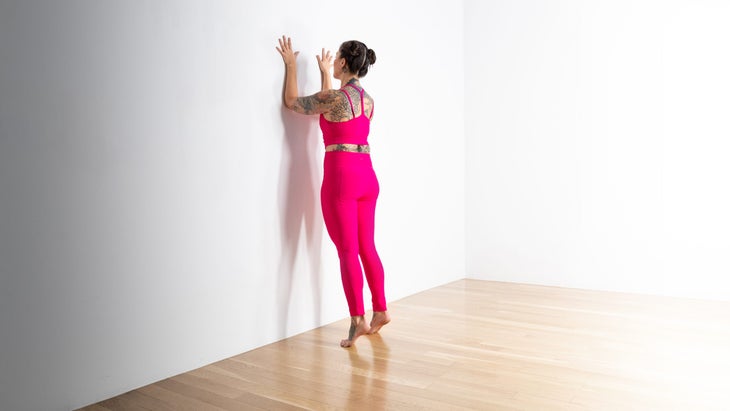Heading out the door? Read this article on the new Outside+ app available now on iOS devices for members! Download the app.
In Forearm Plank, you balance on your forearms instead of your hands, making it an especially beneficial pose for beginners and those with wrist pain—plus, you’re not missing any of the benefits of the full Plank Pose. Like Plank, this posture requires you to engage your core and hold the body straight and strong. It tones your arms and legs while working your shoulders, too.
Dolphin Plank Pose doesn’t just strengthen your abs. It also offers the opportunity to cultivate a deep focus in your mind as you find a way to breathe through the inevitable shaking that your body experiences as you stay in the pose longer and longer.
Forearm Plank Pose basics
Pose type: Arm Balance
Targets: Core
Other names: Dolphin Plank Pose
Why we love it: “This version of Plank Pose, while not my personal favorite, is one of the first yoga poses that struck me as directly applicable to my athletic training,” says Sage Rountree, author of The Professional Yoga Teacher’s Handbook, who teaches a yoga class specifically for bikers. “It was asking my upper body to do something much like propping in aerobars on the bike. Both in Forearm Plank and in aero position in cycling, the key is to strike the balance between core and shoulder strength and stability while also finding some freedom to breathe and (especially on the bike) to look forward.”
Pose benefits
Forearm Plank can be a great alternative to standard Plank Pose if you have wrist or hand issues. It improves posture and counteracts the effects of prolonged sitting and doing computer work; it strengthens your core (including the abdominals and back muscles), arms, shoulders, thighs, legs, and feet. Trust Dolphin Plank to help stimulate proper digestion by facilitating movement through the digestive tract (peristalsis).
This is a pose that can also boost energy and fight fatigue, help build confidence and increase your sense of empowerment.
Dolphin Plank: Step-by-step instructions
- From Balasana (Child’s Pose), shift your body forward and place your forearms onto the floor with your hands shoulder-distance apart and your shoulders stacked above your elbows.
- Pin your elbows into your midline and engage the external rotators of your shoulders.
- Step your feet back, root down with your big toe mounds, and press your heels back.
- Lift your knees off the floor, and engage your quadriceps so your body is long and straight like a plank of wood.
- Direct your tailbone toward the floor in order to create a slight posterior tilt in your pelvis and become compact at your center. (Your lower belly should feel like a tray supporting your lower back.)
- Extend your sternum forward, lengthen your neck, and look straight down.
- Build up to being able to hold for 1 minute at a time.
Teaching Forearm Plank
These cues will help protect your students from injury and help them have the best experience of the pose:
- If you have tight shoulders, keep your elbows under your shoulders, but interlace your fingers for a more comfortable position. Placing forearms parallel is a little more demanding for the shoulders.
- Gaze at your thumbs to keep your head and neck steady.
Beginner’s tip
Relieve neck tension by resting your forehead on a block set between your forearms.
Variations
Knee-Down Forearm Plank

If it feels too intense to keep your knees lifted, lower them. Keep your core engaged and your hips low so that your torso is still at an inclined angle. Hold for several breaths, then rest.
Forearm Plank with props

To help maintain the positioning of your arms, use a strap around your upper arms. Make a loop as wide as your shoulders. Slip your arms through and adjust it around your upper arms before you come into the pose.
Forearm Plank against a wall

You can find the same shape and actions by practicing the pose against a wall. Stand facing a wall and place your forearms on it. Make sure your arms are parallel to each other and that your upper arms are parallel to the floor. Come up onto your toes and lean your weight into the wall.
Preparatory poses
Plank Pose
Chaturanga Dandasana (Four-Limbed Staff Pose)
Follow-up poses
Adho Mukha Svanasana (Downward-Facing Dog Pose)
Urdhva Mukha Svanasana (Upward-Facing Dog Pose)
Salabhasana (Locust Pose), arms only